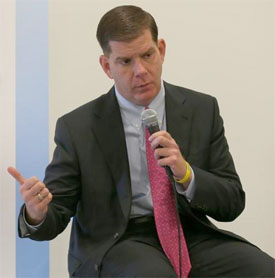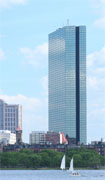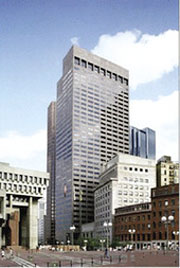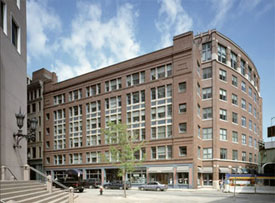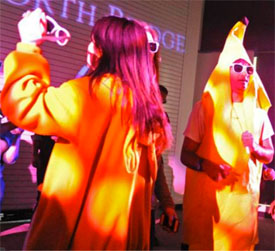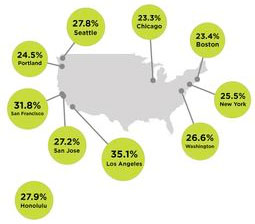How do we use office differently than ten or twenty years ago? Please find a great video on the changing office space workplace and the re-imagining of the office workplace.
0 Boston Real Estate: How will Marty Walsh Impact Development?
Will the development pipeline of new construction continue at its current rate, or drop off under the Walsh administration?
An article in the Boston Globe highlighted some of the questions around the Walsh administration, and its potential impact on office development:
It was clear that Walsh’s plainspoken Dorchester demeanor did not always mix easily with some of the business constituencies he must now represent.
Let us know your thoughts in the comments below, or jump over to the full article on the Boston Globe’s website.
0 South Station Redevelopment: Back to the Drawing Board
The starts and stops at South Station redevelopment – will we see condos or more office space?
A recent article on the BBJ’s website, quotes a senior vice president in Hines’ Boston office:
Seven years after getting permits for a 1.9-million-square-foot mixed-use project anchored by a 47-story office tower, Houston-based developer Hines is headed back to the drawing board. It plans to reduce office space and eliminate a 200-room hotel while increasing the number of residential units, said David Perry, a senior vice president in Hines’ Boston office.
For the full article, head over to the Boston Business Journal.
0 The 25 Largest Office Buildings in Greater Boston (via BBJ)
When thinking about your next office do you care to be in one of Boston’s top 25 largest buildings? Number one is the John Hancock with a total of 1,755,400 rentable square feet that is owned by Boston Properties.
The Boston Business Journal has posted its list of the top 25 largest office buildings in Greater Boston. You can download a pdf containing the complete list of the largest office buildings in greater boston, courtesy of the BBJ.
0 Fidelity Lab Division Tracks Technology and Patents, not Mutual Funds
What happens within our downtown office buildings? Innovation, and not just by technology companies. Fidelity Investments is constantly providing new technology features to its customer base to allow faster, easier access to information.
The Boston Globe recently published an editorial on a division at Fidelity that examines patents and technology, rather than mutual funds or stocks.
“Fidelity’s Center for Applied Technology, home to a team of 75 employees globally who work on high-tech projects for the investment and brokerage giant. While most people at the Boston firm are devoted to managing money and selling retirement plans, this group is responsible for innovation, including technology that helps customers do business with Fidelity and get information about their investments…This department of Fidelity Investments celebrates new patents, instead of mutual fund records. Its giant wall screens display new technology for investors, not the daily movements of the stock market.”
The complete editorial is available to Globe subscribers on BostonGlobe.com.
0 Boston Office Towers: Occupancy Drop; Rents still Climbing
Where is the value in office space within Boston? Low and mid-rise Class A.
Tenants in recent years have worked on space efficiency like State Street with their new facility in the Seaport, which will have less than 100 square feet per employee. Additionally, tenants have sought out a flight to quality by moving up in floors during the recent economic downturn and locking in rates for a longer term.
The Boston Business Journal cites a survey by Jones Lang LaSalle, “which examined 46 towers in the Back Bay, Financial District and the Seaport, found 22 buildings where occupancies dropped, while 21 saw increases and three were flat, year-over-year. Within the 31.8 million-square-foot office market, 5.7 million is available to lease – the equivalent of three John towers.”
More information from the survey is available on the BBJ’s website.
0 Tech Sector Hoping Walsh can Keep Downtown Office Space Affordable
Mayor Menino departs in January for Mayor Elect Walsh. Will our economy grow and prosper with the next administration? Well, it is a delicate balance that will spur development while maintaining affordability.
Boston.com posted a dense, thought-proviking piece examining the impact of the mayorial change on small business locations and city-based office space. Here are a few notable quotes from the article:
I spoke with a half dozen tech entrepreneurs about their hopes for and expectations of the incoming Walsh administration, and picked up on two major themes…They want the new mayor to help keep office space affordable and to improve public transit in the Innovation District.”
IdeaPaint president John Stephans told me his business, which is moving from Ashland to Boston in January, would have liked to relocate sooner but found the cost prohibitive until it enjoyed several successful years.
“We always wanted to be in the city, as do a lot of companies,” he said. “But I think companies feel priced out, especially young, venture-backed start-ups.”
The full article is available on Boston.com, here.
0 Boston Tech Companies Throw Dance Party at Lunch
It seems that ice cream Friday for the office doesn’t stand a chance, when pitted against a lunchtime dance party. Will this be a new mainstay within the Innovation district or a passing fad?
The Boston Globe reports, “Lunch Beat Boston style is an amped-up dance hour, where the Seaport’s District Hall is turned into a darkened disco, and techies groove to thumping electronica so loud that networking becomes, by necessity, a wordless bounce to the beat with your neighbor…Lunch Beat — a global franchise that started three years ago in the electronic dance music hub of Stockholm — is a noontime rave intended to break up the work routine with a midday jolt of techno tunes. Organizers in Greater Boston held their fourth such rave Wednesday at District Hall, the newly erected center of the city’s budding Innovation District.”
The full Globe editorial is available to Boston Globe subscribers on its website.
0 Boston Ranked 3rd Most ‘Walkable’ City
Boston is a very walkable city except when you want to cross the street. Doesn’t matter if you on Beacon Hill or Dot Ave – look left, right, left – then run.
The Boston Business Journal interviewed Walk Score — the company the produced the survey — CEO, Joshua Herst, who stated “Boston is a very walkable place and came out with a score of 79.5, making it a very walkable location.” Herst went on to say “Boston may be our most consistent performer, coming in at number three in our 2008, 2011 and 2014 rankings.”
Additional insights from the interview are available on the BBJ.
0 Boston Ranks 9 for Worst Traffic in US
Has Boston really climbed to the top 10, for worst traffic? Well, I would say we are doing something right by creating more jobs for those drivers to go to. By no sense am I a fan of traffic, but I am a fan of our collective workforce growing our local economy.
A BBJ report notes that Boston has climbed from 21 up to number 9, on a list of the worst traffic cities in the U.S.
The full articles is available on the Boston Business Journal’s website.

